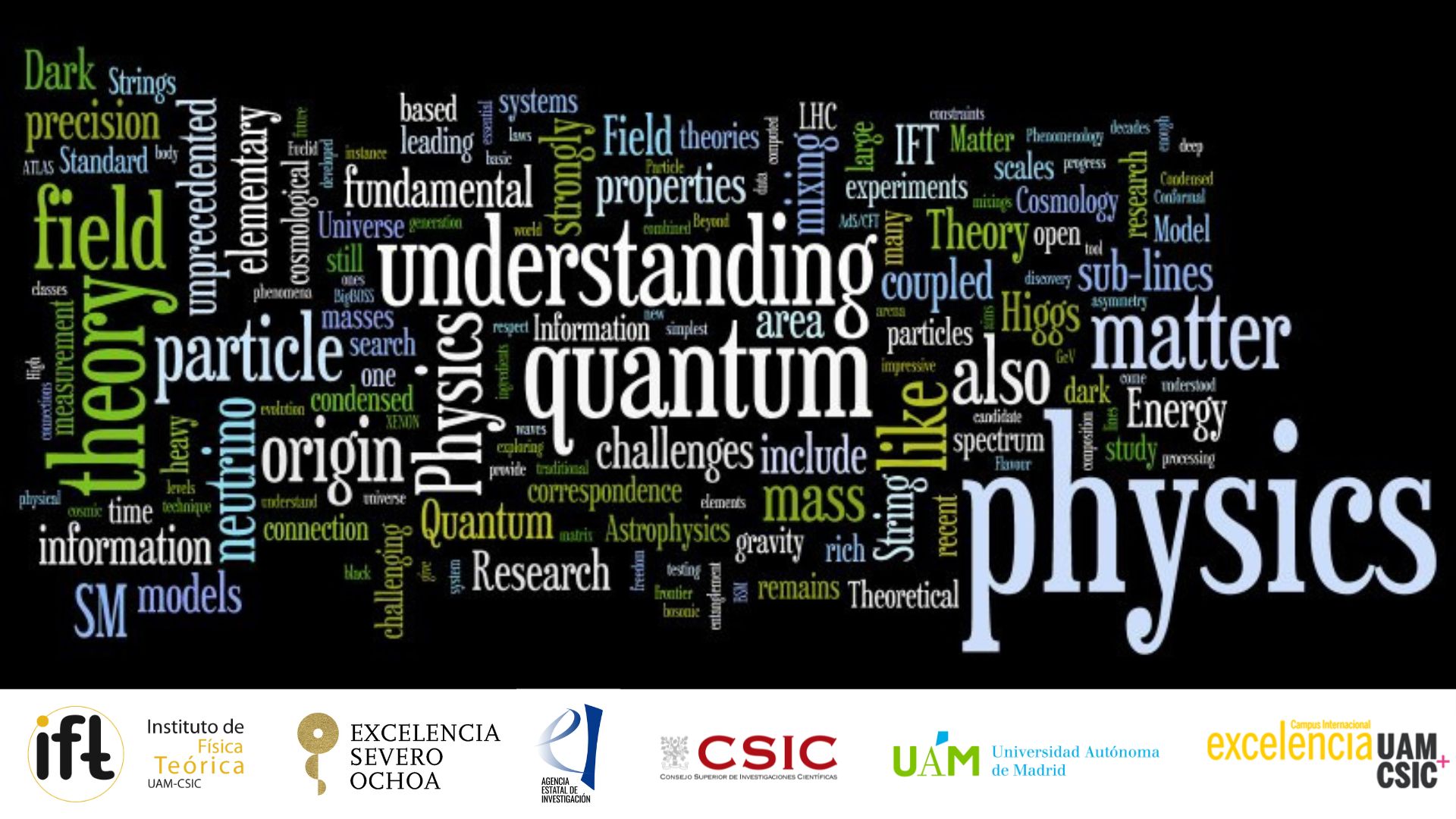Centro de Excelencia Severo Ochoa
Menu
Search

IFT Seminar online: https://zoom.us/j/92840394586?pwd=eTBZb0RVUDY2K3ZrQmQ2UVExVElTUT09
Developing our understanding of how correlations evolve during inflation is crucial if we are to extract information about the early Universe from our late-time observables. To that end, we’ll revisit the time evolution of scalar field correlators on de Sitter spacetime in the Schrodinger picture. By direct manipulation of the Schrodinger equation, it is possible to write down simple “equations of motion” for the coefficients which determine the wavefunction. Rather than specify a particular interaction Hamiltonian, we assume only very basic properties (unitarity, de Sitter invariance and locality) to derive general consequences for the wavefunction’s evolution. In particular, we identify a number of “constants of motion”: properties of the initial state which are conserved by any unitary dynamics. We further constrain the time evolution by deriving constraints from the de Sitter isometries and show that these reduce to the familiar conformal Ward identities at late times. Finally, we show how the evolution of a state from the conformal boundary into the bulk can be described via a number of “transfer functions” which are analytic outside the horizon for any local interaction. These objects exhibit divergences for particular values of the scalar mass, and we show how such divergences can be removed by a renormalisation of the boundary wavefunction—this is equivalent to performing a “Boundary Operator Expansion” which expresses the bulk operators in terms of regulated boundary operators. Altogether, this improved understanding of the wavefunction in the bulk of de Sitter complements recent advances from a purely boundary perspective, and reveals new structure in cosmological correlators.
Social media